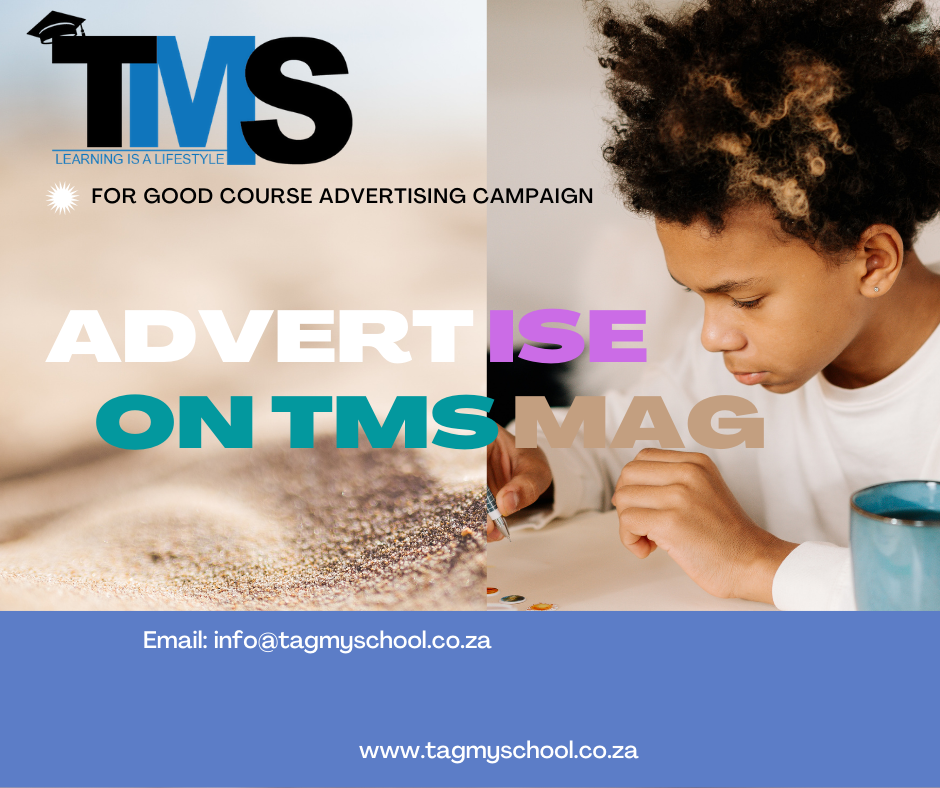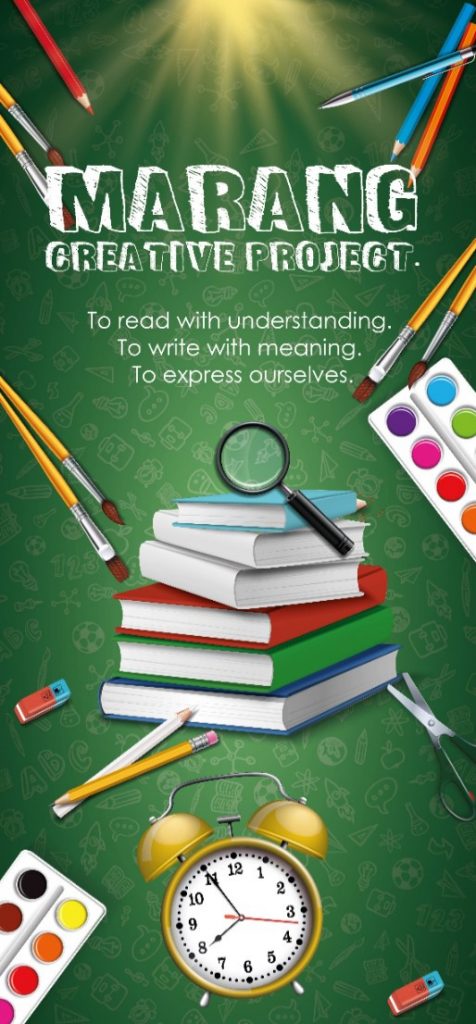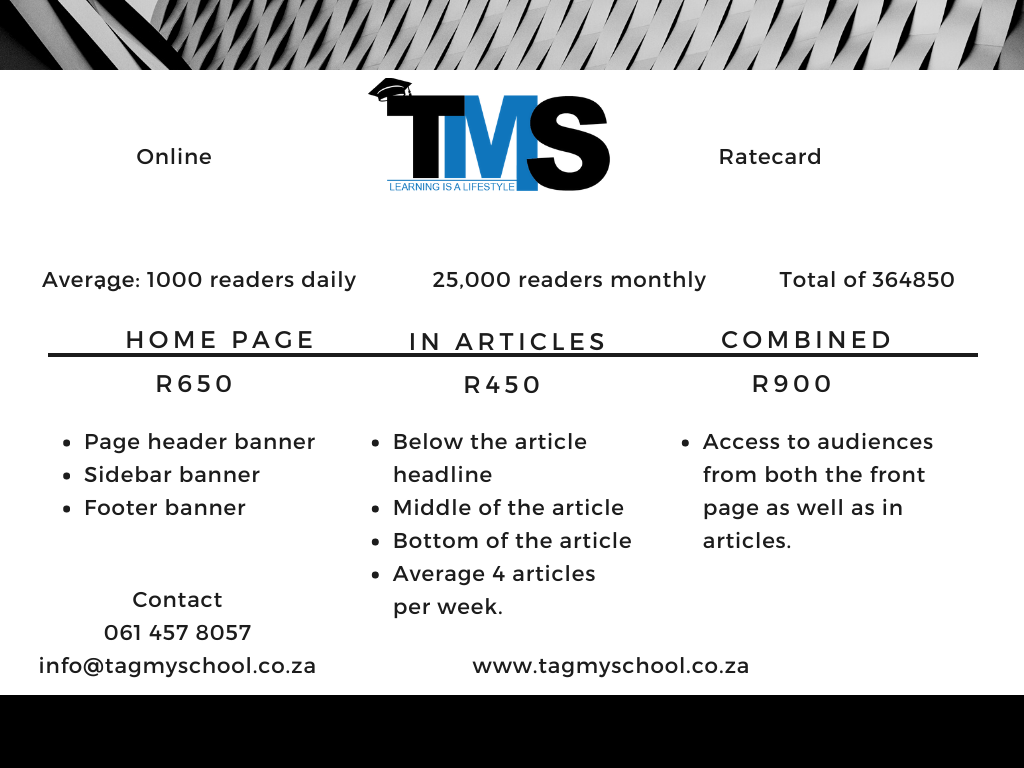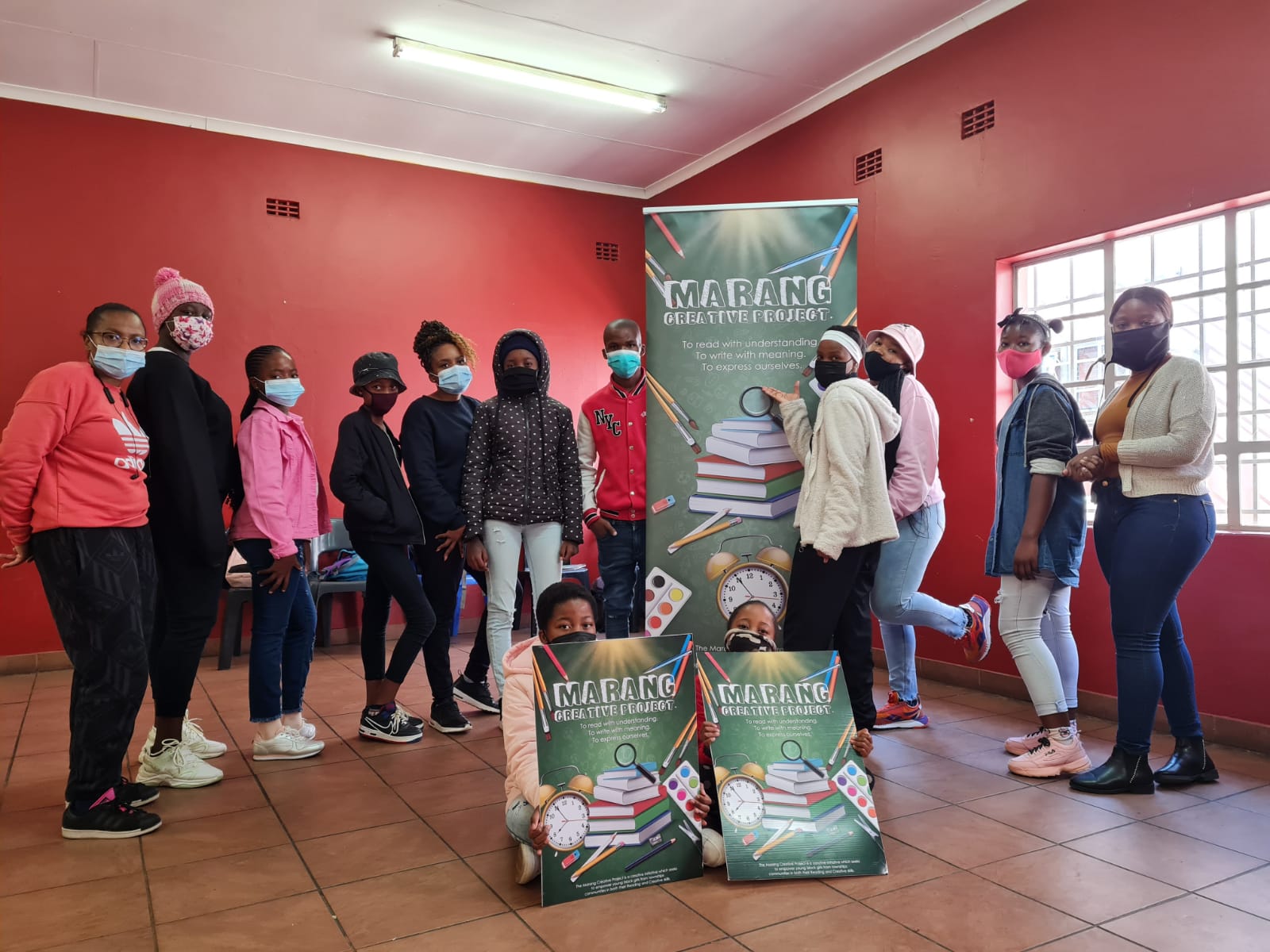
What inspired the project?
Marang Creative Writing Project began about two years ago. It was initially hosted at home in our living room where we invited young people to join our book reading and discussion sessions. We noticed how teenagers lacked access to constructive activities outside of school and could often be seen loitering in the streets and engaging in destructive behaviour.
Being aware of the vulnerability of young people to external societal pressures, we wanted to try and mitigate those factors by involving them in a reading and writing group which we hoped would inspire them to stay off the streets and think beyond their immediate circumstances.
What does Marang mean?
Marang are sun beams or sun rays (rays of sunshine) in Sesotho.
Please tell us more about the Marang personnel

Marang’s project leader is Zanele Chakela. She is a writer and entrepreneur. She has a background in story-telling in multiple industries. A story-teller at heart, she believes in the power of communicating and telling high quality narratives through multiple platforms. She uses various narrative techniques and strategies to help establish and maintain positive representations of African identities and realities and to encourage public engagement.
She is the co-author (alongside Ulrike Hill) of “A Dream Realised, The Challenges and Triumphs of Building a Mandela Legacy”, a non-fiction narration of the stories behind the planning for, fundraising and building of the Nelson Mandela Children’s Hospital.
Lungile Nhlabathi is a high school educator who teaches Creative Arts for grades 8 and 9 learners at Sijabulile Secondary School.
She is passionate about teaching because she believes that education should be inclusive to all learners regardless of their background. She is an agent of change in society.
In addition to teaching Creative Arts, she is a facilitator for a creative writing project where she teaches students the basic concepts of creative writing.
She holds a BEd in Senior and FET phase teaching from the University of Johannesburg. She majored in English and School Support ICT.
She is hoping that the creative writing project grows immensely and hopes to incorporate ICTs in future.
The kids are of various ages ranging between 9 and 18 years. They all currently reside in Meadowland, Soweto, and attend schools in and around Soweto and the West Rand district. We currently have a total of 12 children (10 girls and 2 boys).
How can creative reading and writing be used to change the narrative of an African Child?

Creative reading and writing is indeed a critical element in the development of personality, identity and expression as a child. Having grown up in the township of Soweto, my experience of storytelling through art and other creative outlets hasn’t been vast.
I appreciate how stories of our traditional beliefs, customs and to a certain extent, our history, have been passed on through folklore and children’s rhymes.
There were many occasions where we learned about past happenings while playing on the streets and hearing tunes and rhymes passed on from the older kids while playing skipping rope for example. I was also quite fascinated by the natural affinity for us to tell stories children using stone drawings in sand, on tarred streets and concrete pavements or pen on paper.
I think that art can be used to change the landscape of our townships and rural areas through its ability to encourage creativity, expression and engagement with the various issues we face daily.
It’s encouraging to know that various institutions exist both on a governmental and non-governmental capacity, to invest in and foster deeper participation of young people in arts industries and practice.
However, I do believe that more effort and investment of resources is needed in this regard. Expression is important. Children see, feel and experience many things in their daily lives. They could benefit immensely from the availability of different platforms which could be an outlet for them to express both joyful and painful emotions as well as celebrate their victories while tackling their challenges.
Any noteworthy development among the young people involved in the project?

When we started out a few years ago, I was surprised to learn that some of the youngsters struggled with reading and comprehending narratives on different levels, as well as expressing themselves with confidence. I can relate to that because both of those are challenges which I have faced at some point in my life.
I’m elated to say that there has been a vast improvement in the reading and writing skills, as well as verbal expression and confidence of the kids in Marang. They read and write beautifully, telling powerful stories with great structure and narrative excellence.
Together, they have developed an intriguing story which we are in the process of nurturing. I’m amazed by their progress and inspired to continue on this journey with them and to expand the reach of Marang to other townships and rural areas in the near future.
It must be fun and also challenging to run a project of this kind

We have lots of fun during our workshop. As adults, we have rediscovered the magic of playing. The young ones have shown us the importance of letting go as part of the creative process. As part of our curriculum, we start off every workshop with a game of 30 Seconds to encourage the improvement general knowledge and vocabulary, and the game of Grocery list to exercise memory and information retention.
During our sessions, there is a lot of laughter and positive expression as we hold space for each of our youngsters to be themselves and to learn.
Some of the challenges we have faced are related the process of expressing and creating. Some of the kids have gone through painful experiences in their past, and continue to endure harsh realities daily. This causes them to become emotional and to close up when having to speak on specific topics.
We have also experienced challenges with attention spans which we have mitigated by splitting workshop activities into shorter segments.
How important is reading and writing for young people in order to own their story?
It’d imperative. In my own life, I’ve found writing to be one of, if not the most critical outlet for getting to know myself, processing my surroundings and figuring out the configuration of my future.
Through reading and writing I’ve been able to imagine, create and solidify realities in my present and future which I think would have been harder had I not had this relationship with words and stories.
Tell us about your book and where can people get it?
You started out focusing on empowering young girls, but something happened?

Initially, the vision was to empower primarily young girls through Marang, I strongly believe in that. However, one of the most beautiful things that has happened is that we were joined by two dynamic young boys who showed a keen interest in participating and learning.
I must say that having them be a part of the project has been a magical experience in that all the kids learn from each other and benefit from each other’s knowledge, experiences, and perspectives regardless of their gender and identities.
As marang, we do not intend to leave any children out. Going forward, the entrance criteria will be the ability to commit to the process of learning and growing. We are excited about that.
South African youth does not read much, how do we change this?
A large part of reading is fostered by interest, and interest involves being inspired. I think it would be more inspiring and interesting for the youth to see representations of themselves in more written narratives.
There are writers like Lebohang Masango and Zulaikha Patel who are actively and unapologetically telling authentic African stories with authentic and powerful young black female lead characters. That’s the way to go.
Let the youth see themselves in images and stories told about their realities. That will encourage reading.
I’m also of the view that young people do read and write. When I grew up, there were comic books that I enjoyed and read over and over again without being coaxed.
Nowadays, the youth is active on social media and other platforms like YouTube can be used as reading toold, it’s just that they don’t read enough.
I believe that if we can make reading more accessible by breaking it down into smaller and more easily consumable bites, young people can read more. We have to rethink storytelling and make it more digitized, relatable and interactive.
It is Youth Month, your message to young people please…
Let’s make a noise through our words, let’s make sure that we write ourselves truthfully and determinedly into the future. Let us be beautiful in every story that will ever be told of us in the future for truths sake, for our sake.
